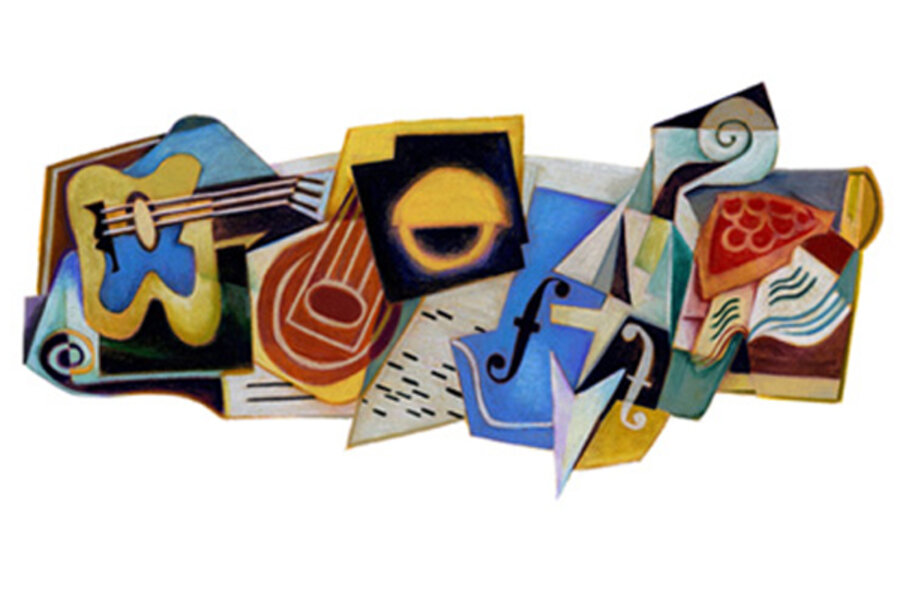How Juan Gris brought fun to Cubism
Loading...
Google swapped out its regular logo today for shards of violins, guitars, and maybe a little cherry pie in the top-right corner. This kaleidoscope-twisted Google doodle pays respect to the Spanish artist Juan Gris. The digital collage honors three things about Mr. Gris' work: It's colorful. It's beautifully fragmented. And, chiefly, it's fun.
Gris studied art in Spain, but his creative work didn't really take off until he moved to Paris in 1906. There, he befriended Henri Matisse, Georges Braque, and Pablo Picasso, three heavy-hitters of 20th century art. They introduced him to an emerging school of painting called Cubism.
Cubism is a weird but very important art style. For hundreds of years, traditional painters captured life as if they were snapping a photograph – everything was flat, still, and from a single perspective. But Cubists thought that this time-honored approach was, in many ways, unnatural. In real life, your eyes wander. You see the world from shifting angles. Nothing remains frozen in time and space. So the Cubists experimented with ways to break free.
Picasso and Braque led the way. Their paintings captured scenes from many different perspectives all at once. Yet much of their work feels purposefully exclusive. Without a thorough understanding of the Cubist philosophy, pieces such as Picasso's "Ma Jolie" could be baffling. What is that? The title translates to "My Pretty Girl," but it takes a very trained eye to see why.
Gris used the same ideas, but came up with more whimsical results. Take a look at "Man in the Cafe," painted the same year as "Ma Jolie." The subject is far more identifiable, but also more joyful and frisky. From this piece, we get the sense that Gris enjoys the playfulness of the Cubist style, and wants you to enjoy it as well.
Part of the difference came from Gris' healthy injection of color. "Where Picasso and Braque in the heroic years worked by taking color out, Gris worked by putting it in," wrote the New York Times in 1983.
Gris grew with the other Cubists, eventually embracing the movement's second wave, called Synthetic Cubism. This new push took the same ideas but experimented with new textures and collage elements. He in particular adopted papier collé, where paper is pasted into a collage. In fact, this is the inspiration for today's Google doodle. The search engine combines pieces of Gris' “Violin and Glass 1,” “Bol et Livre,” “Guitar with Clarinet,” and “The Book of Music.”
Just as Gris pasted together snippets of reality, Google pasted together snippets of Gris. It's a fitting tribute to the artist, 125 years after his birth. Happy birthday, Juan Gris.
For more on how technology intersect daily life, follow Chris on Twitter @venturenaut.







